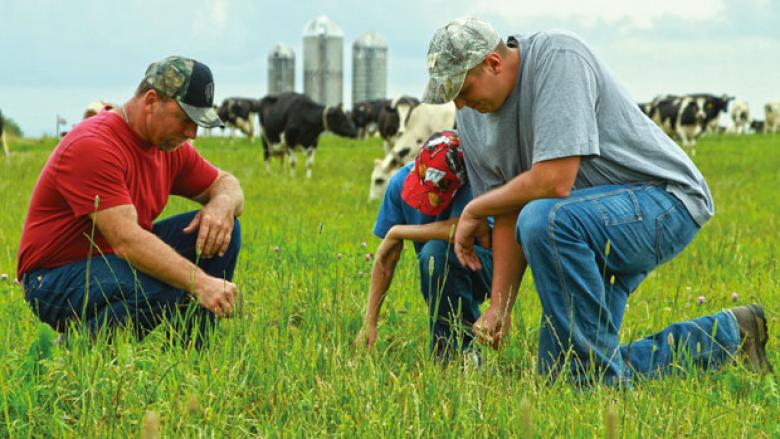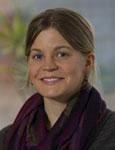
Location
Joe Tomandl’s farm aims to “let nature provide the energy.” Tomandl and his wife operate a grass-based dairy in north-central Wisconsin that has grown from 80 acres with 35 cows to 320 acres of pasture and 170 cows. The cows are systematically rotated through a series of subdivided pastures according to forage availability. The grazing principle is very simple: instead of planting and harvesting livestock feed and fertilizing fields intensively, “let the cows do it—let them go out and harvest their own feed and leave their manure on the land,” Tomandl explains, “so that the farm can stay green.”
The end result is a farm that is covered in green grass throughout the whole growing season. Pastures are always vegetative and actively collect the sun’s energy and sequester carbon in the soil. “As soon as the permanent pasture greens up, I’ve got millions of photo solar collectors utilizing the energy and converting and storing carbon,” Tomandl says. “It takes a while to develop thick permanent pastures, but that’s what we are going after. We want to keep the farm green as long as we can during the year.”
Conventionally, a corn field, for example, is tilled and planted in the spring, leaving soil exposed and more susceptible to erosion while the seed is waiting to germinate and develop a plant that can keep the soil in place. Meanwhile, we are also missing the opportunity to capture solar energy that will grow plants that can also sequester the carbon.
Tomandl’s dairy management practices provide a sound example of achieving both economic and ecological sustainability. They also demonstrate the promising potential of grazing land as an enormous and permanent reservoir for sequestering organic carbon.
Devoted to the dairy grazing movement and keeping more farmers on the land, Tomandl is program director of the Dairy Grazing Apprenticeship, an initiative of GrassWorks, a membership organization that promotes managed grazing and trains start-up dairy farmers to develop grazier skills and knowledge, links them to agricultural, environmental, and consumer groups, and ultimately boosts the dairy industry with independent dairy farm ownerships and the next generation of skilled grazing farmers.



